I had promised a post summarizing popular sleep methods a while back. I have actually had the summary completed and sitting in my drafts folder for several weeks now but the reason I haven’t published it is because I was having an internal debate over whether I should. There was a time when I struggled to adjust to the new world of sleep (or lack thereof) with an infant. I grasped at straws and read every book I could find to get some direction…to figure it all out…to learn the secret. There is a wealth of information out there that my small sampling of reading doesn’t even put a dent into. Every book, every doctor, every nurse and every existing parent will tell you to do something different and quite frankly, it’s gosh darn overwhelming! I wasn’t sure if I wanted to contribute to the mass confusion with my amateur opinions. So, I’ve decided to first share my personal sleep journey and then my findings so you can take it all with a grain of salt.
My Journey:
During pregnancy I thought a lot about how my life would change when the baby arrived. I lived selfishly knowing that it might be my last chance to do so. I spent lots of time with friends doing things you can’t do with a baby around, I slept 9 hours every night and would stay up into the wee hours of the morning scrap booking and sleep in until noon if I so desired. It was about living large while I could since I knew my lifestyle would be inevitably different once the baby was born. After hearing all the horror stories and warnings from everyone, I felt like I was prepared for the absolute worst with regards to the lack of sleep.
Once Chase arrived as a helpless little newborn, I had so much armor on that I felt like I was prepared for anything. This combined with the leftover adrenaline from the birthing experience, helped me face the challenges with a positive spirit in the early weeks. Although he slept most of the time as most newborns do, I was breastfeeding so I would wake every 2-4 hours for long intense feedings. I remember sitting propped up against my headboard with Chase attached to my breast, looking over at my husband snoring and feeling resentful that he got to sleep and that I couldn’t. I would start to doze off and then jolt awake remembering I had a new baby on my lap. There were times I wondered how I could possibly make it through the long feeds if I didn’t have toothpicks to hold my eyelids open. In a matter of three weeks, I found myself waking up on my own 2-3 minutes before the baby would wake and cry to eat. I was able to stay awake and didn’t feel groggy and incoherent as I had previously. Somehow my body adapted and it was amazing! I did find it helpful to bring him into bed with me when Stephen went to work at 6 am so I could breastfeed on demand while lying down and sleep in until about 10 am which is when I started my day. In total I was getting about 8 hours of sleep, it was just not consecutive hours of sleep. I often felt rested enough to go without napping in the day provided I took to a reasonable bedtime. I was able to keep up with household chores and remain social.
| He’s totally worth it! |
Soon chase was feeding much more efficiently and I began to get between 4-6 consecutive hours of sleep through the night. When he did wake to feed in the wee hours of the morning, I remember sitting in the chair in his nursery in the dark feeling like I was the only one in the world who was awake. The nights felt cold and lonely as if me, Chase and my breast were the only survivors. Chatting with other moms on forums and texting with my mom friends took the chill of the night away and I began using my iphone to stay stimulated during those late night feeds. Since Chase was getting older, he was having more awake time so the biggest sleep adjustment I faced at this point was getting used to starting the day between 6 and 6:30. The dark winter mornings were killer but as the spring rolled around, I found myself with that renewed sense of energy that comes with the 6am sunrise. At this point we also had established a routine 7pm bedtime so I felt like my life was balanced. I had a few solid hours of uninterrupted me time every evening, a 7 hour non consecutive sleep I could count on and time to do housework during Chase’s naps.
As we made it through these various stages, I slowly began to strip the armour off…we were past the hardest part. Well, as it turns out this was a total misconception on my part. The next stage I like to call “the great sleep regression of month 4 and 5”.
My life is now defined as: “before the sleep regression” and “after the sleep regression”.
After stripping all that armor I was left naked in a battlefield without any weapons. Chase’s excellent sleep habits, that I might have taken a little bit of credit for at this point, slowly went to the way-side and got progressively worse over a two week period before slowly getting better over another two week period. When it was at its worst we were waking every single hour with an inconsolable baby. It was so hard to hear him cry after going through the baby needs checklist and knowing there was absolutely nothing we could do to help him. We had him checked by the doctor, tried ibuprofen, gripe water, oval drops, laying him upright, propped on a pillow, more clothes, less clothes….you name it and we tried it. The crying was bad but Stephen and I stepped up as the great team we are and took turns throughout the night and day. The hardest part was not knowing when it would come to an end…after a 14 day count we were hopeless and no longer questioned anything…it was pure survival tactics at this point. I suddenly had a profound appreciation for mothers of colic babies, single mothers, army wives, and teenage mothers. How…HOW DID THEY DO IT!!?? This was a planned pregnancy of two adults over 30 and this was the hardest thing I have ever done in my life. Single mothers I bow down to you!
After the 4 weeks of hell, Chase gradually returned to his previous sleeping habits and I would no longer describe my boy’s sleeping habits in words in fear of jinxing us! Let’s just say I feel very blessed with the current sleep situation and I don’t have any expectations around it staying like this. My friends had their theories of what caused this major sleep lapse… teething, his sudden onset of gross motor development, neurological changes… whatever it was I am glad we made it through. Some of the things I learned during the great sleep regression was:
1) Patience doesn’t grow on trees
2) I require at least 4 hours of non-consecutive sleep to function on any level
| Isn’t he an angel? How could I throw him out a window? |
3) Do not take anything personally that is said to you between the hours of 2 am-5 am in the presence of a crying baby
4) No, you are not a bad mother for wanting to throw your child out the window
5) Taking care of mommy is just as important as taking care of baby…a happy mommy is a good mommy…take every bit of help you can get!
6) Who needs clean clothes anyways?
7) You know that advice that everyone gave you when you were pregnant to sleep when baby sleeps? Well it turns out that even if you didn’t use it in the newborn stages, you can still use it anytime thereafter.
8) There is no secret…in some cases it’s a matter of survival, others it’s a matter of trial and error. There are way too many variables to always know the answer. Know your baby, trust your instincts. Period.
So…now I will very hesitantly share a summary of popular sleep method books:
Attachment parenting – Attachment parenting was coined by the well known Sears family of pediatricians, who also happen to be the parents of 8 children. Their theories encompass an entire attitude or parenting style beyond a basic sleep method. The basis of attachment parenting is building a trusting bond with your baby and to act upon your natural instincts to nurture and care for your baby’s biological needs by following their cues. According to Sears, this baby led approach leads to less crying and a happier baby. Some of the attachment parenting techniques used to build the bond between parent and baby include breast-feeding, feeding on demand, baby wearing, responding to crying and co-sleeping. Narrowing in on the sleep aspect of this parenting style, the Sears’ advocate the family bed or co-sleeping and believe that by keeping the scent of mom close by, baby can gain a sense of security and can more easily nurse through the night. They believe infants need to be “parented” to sleep and not rushed according to the parents agenda. They suggest establishing strong bedtime rituals such as a warm bath, infant massage, cuddling and nursing a baby to sleep. By using the “limp limb” technique, parents can ensure baby has gotten past the first 20 minute stage of light sleep before putting the baby down. They recommend beginning this approach from birth and continuing until the baby self-weans from the family bed. This is quite simply, what mothers did hundreds of years ago and in some Eastern cultures continue to do today.
IMHO (in my humble opinion) – I’ve read several of the Dr. Sears books that support attachment parenting methods including “The Baby Book” and “The Discipline Book” and I would recommend both to any parent in a heartbeat. Although I don’t agree with every aspect of attachment parenting, I like the intuitive approach and appreciate the authors acknowledgment that parents should do what they feel works best for their baby. You won’t find any hocus pocus sales pitches in these books, just simple advice based on the authors beliefs.
The Baby Book by Dr.Sears @ Indigo
Dr. Sears Resource Website
Ferber Method – This opposing style to attachment parenting claims Sears’ methods are a form of crying suppression and that eventually, if left alone to sleep in a crib some day, the child would not have the skills to fall back asleep on their own. Dr. Richard Ferber, Director of the Center for Pediatric Sleep Disorders and author of, “Solve your Child’s Sleep Problems”, believes sleep training should begin at 6 months of age. This should include a predictable bedtime routine, putting the child to bed awake, letting them cry it out (CIO) while checking on them at decreasing intervals and minimal night-time interaction. This means no feeding, rocking or picking the baby up during the night hours. Although seemingly cold, Dr. Ferber believes this method will teach babies how to self soothe and eliminate sleep problems. He does suggest using your voice as a means to calm your baby while crying and recommends a transitional object to provide a sense of security.
Solve Your Child’s Sleep Problems by Dr. Ferber @ Indigo
An interesting article debating the Ferber method
IMHO – I didn’t have any desire to read Dr. Ferbers book because I was turned onto two alternatives that use some of his methods with a softer approach which I review below. Also important to note is that there are continued debates over the possibility that the CIO method may cause physical damage to the central nervous system and impact developing brain chemistry in infants.
Baby Wise by Gary Ezzo & Dr. Robert Bucknam @ Indigo
IMHO – In my opinion, the book has a logical and convincing argument supporting the CIO method and provided me the strength I needed to face LO’s continual crying the night I decided to test out the method. Again, I don’t personally agree with everything the book advocates but I did find some of the information useful and most methods could easily be adapted. I should mention that there is concern in the medical community about using PDF as it may cause failure to thrive in young infants.
Baby Whisperer – Tracy Hogg, the self-proclaimed baby whisperer, shares simple methods in her book, “Secrets of the Baby Whisperer”. What differentiates her from other methods is her recommendation for implementing the E.A.S.Y. routine where you get your baby on a cycle of eating, engaging in active play, sleeping followed by you time. She also provides a quiz for profiling your baby and refers to how various “baby types” respond to certain techniques throughout the book. Similar to Baby Wise, she recommends watching for cues and body language to catch babies in their optimal sleep window and suggests avoiding props including nursing, rocking or allowing the baby to fall asleep in your arms. Her suggestion with regards to crying is to not rush in at every cry and whimper. Often babies will have a short but predictable cry just prior to drifting off to sleep which you don’t want to interrupt. Should a baby continue crying for a period of time, she suggests the “pickup, put down” method by tending to them but putting them down again once their crying stops and their need is met. Prior to bedtime she recommends an established routine, cluster feeding and for newborns, the use of swaddling and pacifiers in moderation. She also points out that there are occasions when babies may have normal sleep disturbances, like when they begin solids, become mobile or during teething.
Secrets of the Baby Whisperer by Tracy Hogg @ Indigo
IMHO – Although Tracy is lacking credentials, she does have appealing methods. By nature people like to put things in categories to order to relate or identify with something and her baby profiling does just that. Her EASY routine is simple and easy to grasp but honestly, my baby fell into that routine naturally before I even heard of her book or the EASY method. He just as quickly fell out of it once his daytime feedings decreased. She provides great information on basic infant care and had the best breakdown of decoding infant body language and crying that i have come across. I would say I learned some things reading the book, but I found her style to be condescending.
Healthy Sleep Habits, Healthy Child – This book was written by Dr. Marc Weissbluth, an American pediatrician who has done extensive research on sleep disorders. His approach zeroes in on the importance of both day and night time sleep and teaches parents how to help their children form good sleep habits within the framework of their natural sleep cycles. By paying attention to your baby’s sleep cues and teaching self-soothing methods, CIO is supported but minimal.
Healthy Sleep Habits, Healthy Child by Marc Weissbluth @ indigo
IMHO – The beginning of this book was a modge podge of statistics and studies to prove theories and convince readers how important sleep is to a child from a physiological point of view. Of course this is important but yah, yah, yah….I get it already! You know your stuff… I’m a sleepless parent and can’t absorb all these numbers…get onto the quick fixes already! I found the rest of this book to be more aimed at troubleshooting existing sleep issues broken down as common concerns by age. I continue to use this as a reference book as Chase grows older and find it to be the most logical, non-gimmicky book in my library.
6





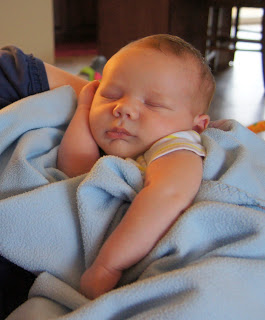



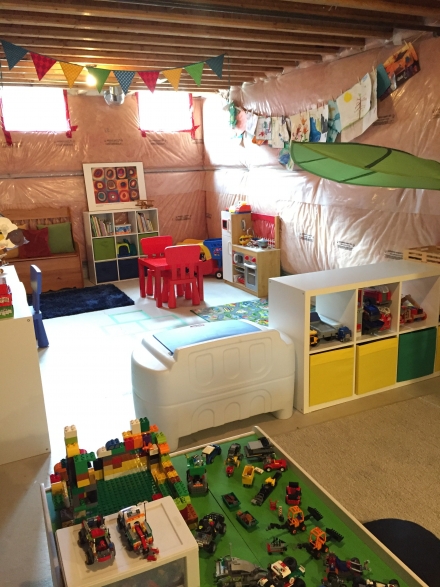
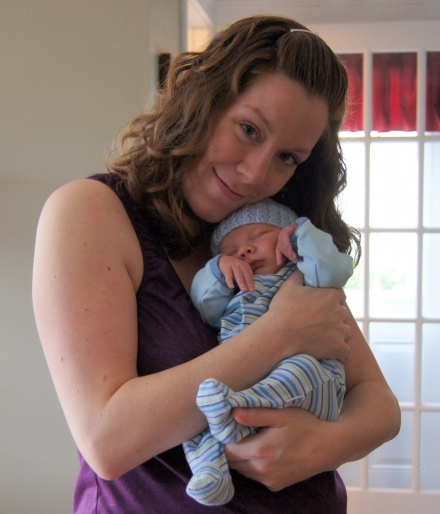
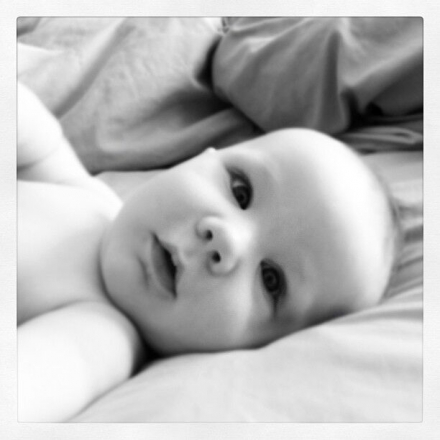
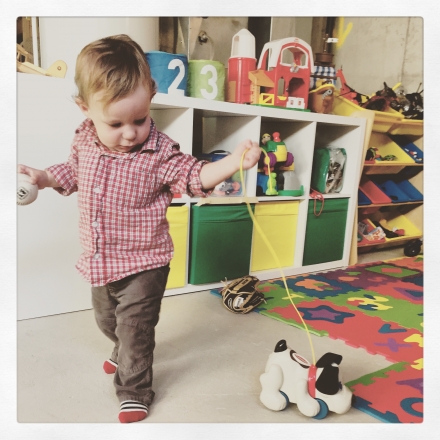
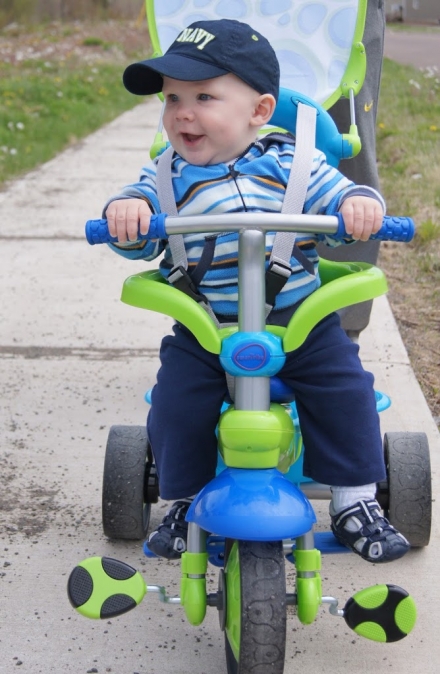

Some babies are really having trouble in falling and staying asleep. Thanks for the helpful information.
Hi Mark,
That seems to be a common frustration. I found it helpful to learn about infant sleep cycles and use trial and error with lighting in the room and white noise. I also eased up on my response time to his cries when he wakes up through the night. Good luck!